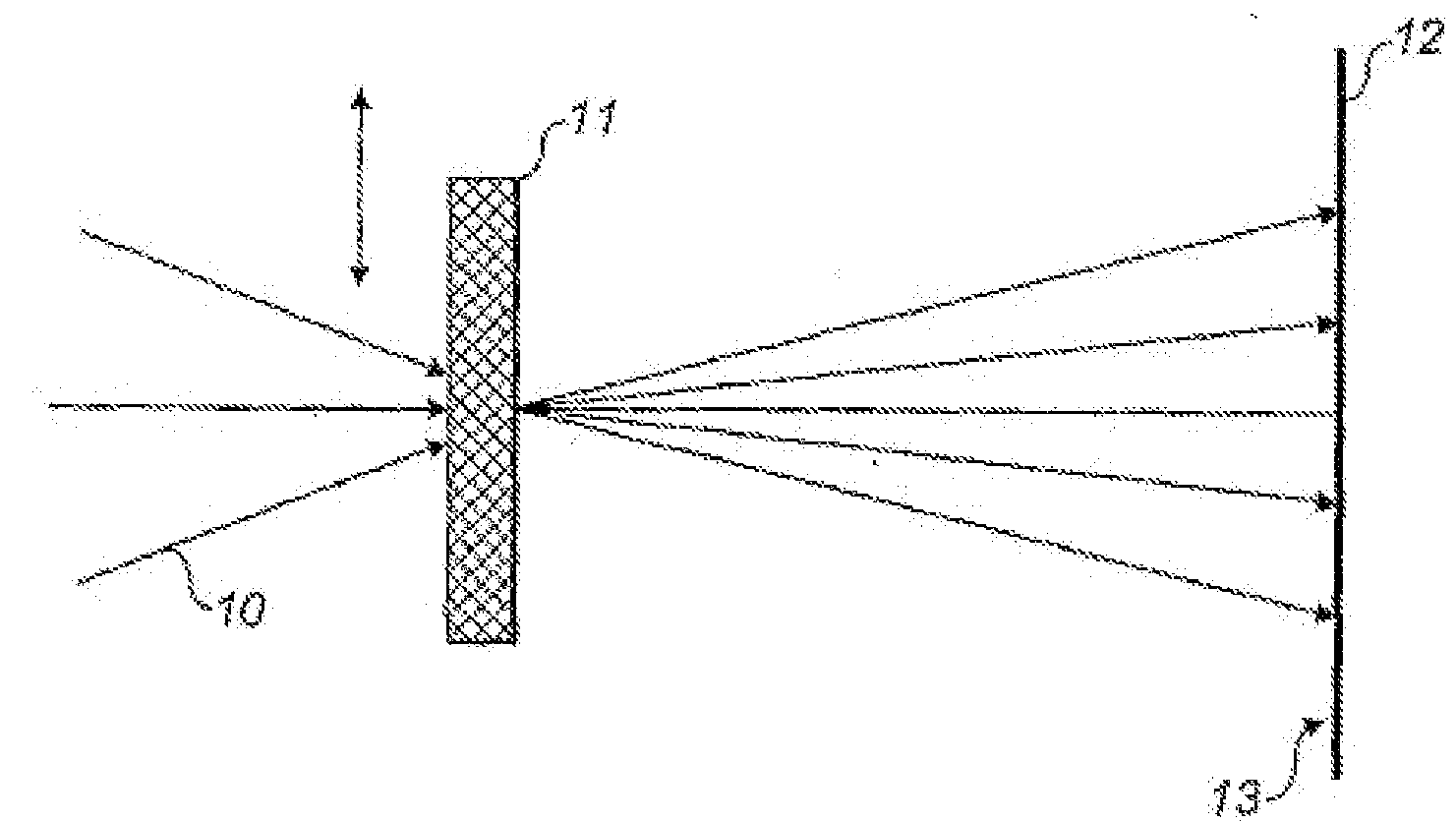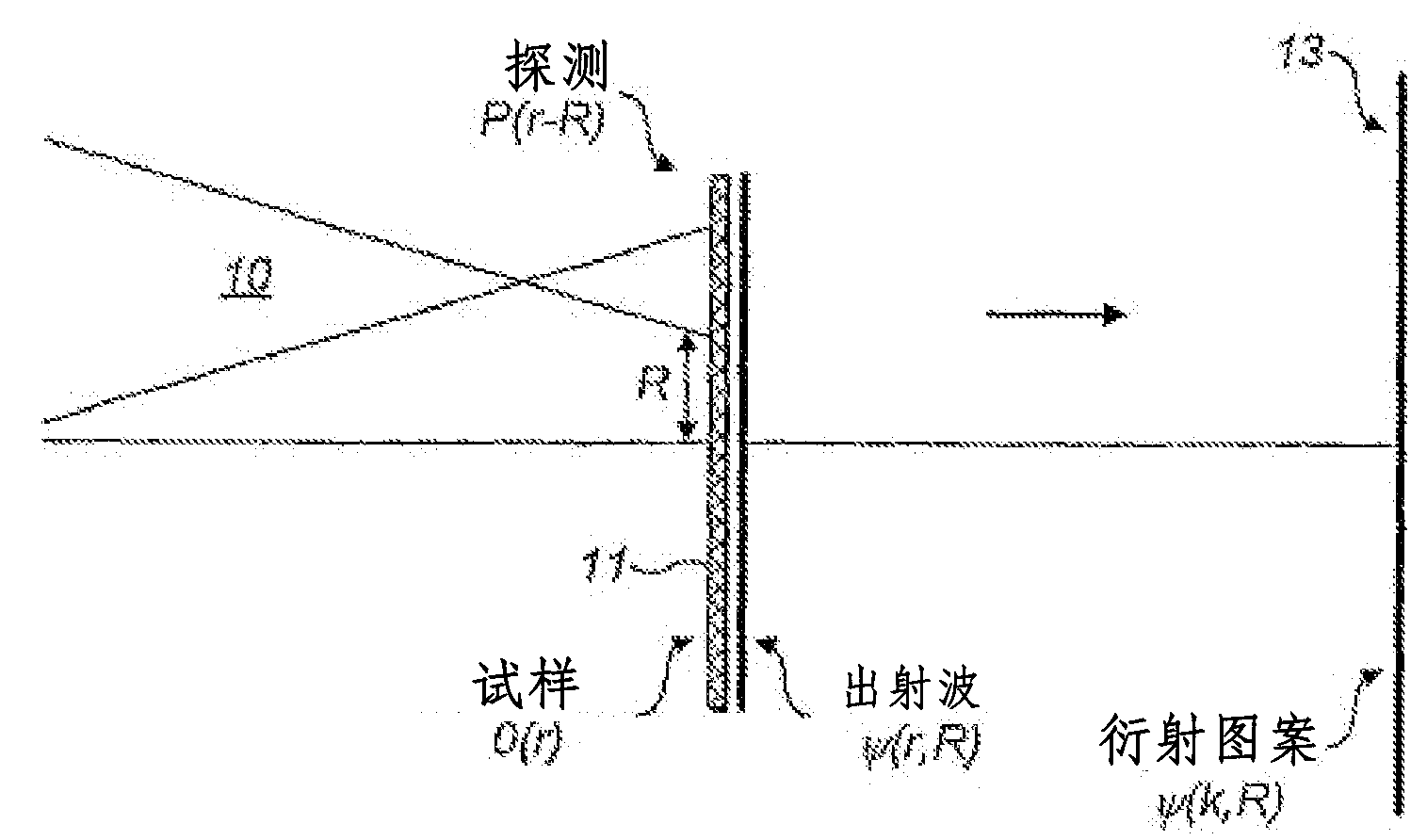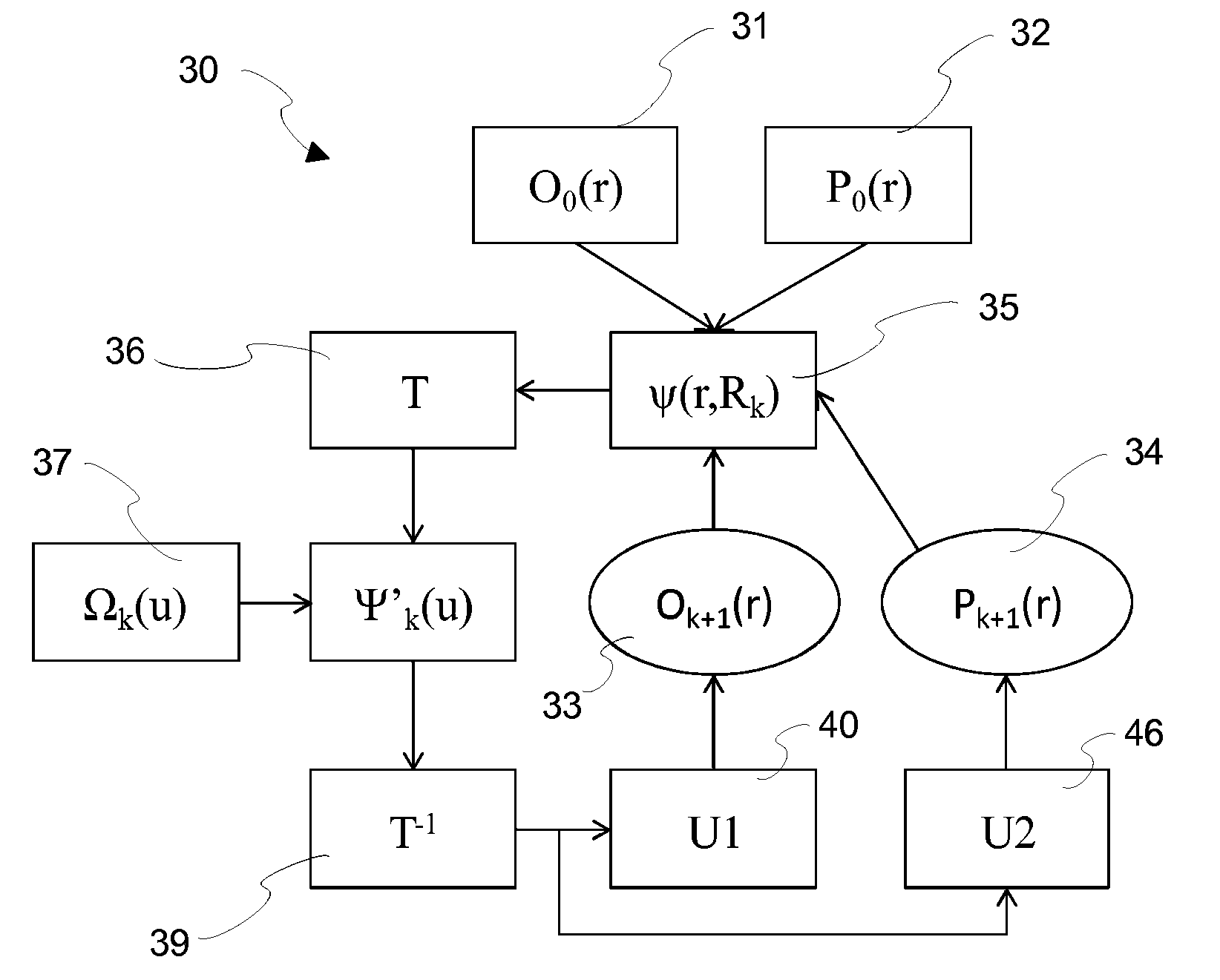Calibration of a probe in ptychography
A detection area and detector technology, applied in measuring devices, radiation measurement, X/γ/cosmic radiation measurement, etc., can solve problems such as algorithm failure to generate images, inaccurate sample estimation, algorithm divergence, etc.
- Summary
- Abstract
- Description
- Claims
- Application Information
AI Technical Summary
Problems solved by technology
Method used
Image
Examples
Embodiment Construction
[0030] Like reference numerals refer to like parts in the figures.
[0031] figure 1 It is shown how to develop the scatter pattern and how to use the scatter pattern to determine image data corresponding to the information of the structure of the target object. It will be understood that the term target object refers to any sample or object placed in the path of incident radiation causing scattering of that radiation. It will be appreciated that the target object should be at least partially transparent to incident radiation. The target object may or may not have some repetitive structure. Alternatively, the target object may be fully or partially reflective, in which case the scattering pattern is measured based on the reflected radiation.
[0032] Incident radiation 10 is caused to fall on a target object 11 . It will be understood that the term radiation should be interpreted broadly as energy from a radiation source. This would include: electromagnetic radiation incl...
PUM
 Login to View More
Login to View More Abstract
Description
Claims
Application Information
 Login to View More
Login to View More - R&D
- Intellectual Property
- Life Sciences
- Materials
- Tech Scout
- Unparalleled Data Quality
- Higher Quality Content
- 60% Fewer Hallucinations
Browse by: Latest US Patents, China's latest patents, Technical Efficacy Thesaurus, Application Domain, Technology Topic, Popular Technical Reports.
© 2025 PatSnap. All rights reserved.Legal|Privacy policy|Modern Slavery Act Transparency Statement|Sitemap|About US| Contact US: help@patsnap.com



